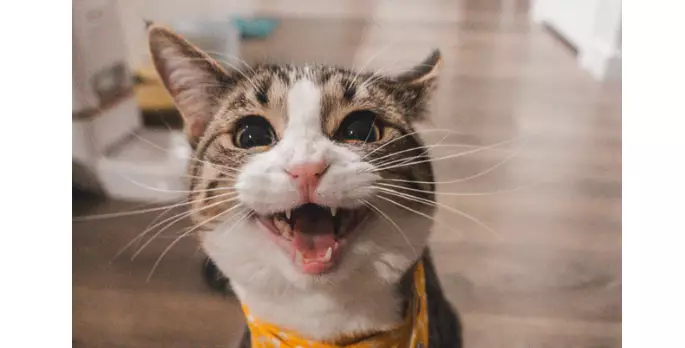When considering a pet, many people think about the dog’s friendly wagging tail or the gentle purring of a cat. While dogs have long been known for their loyalty and sociability, cats often remain enigmatic creatures, leading some to wonder about their diverse personalities. A recent study spearheaded by Dr. Lauren Finka at the University of Lincoln sheds light on the intricate tapestry of feline behavior, revealing that cat personalities can be categorized into five distinct types.
Dr. Finka’s research, which involved interviewing around 200 cat owners, underscores that a cat’s personality is not solely an intrinsic trait but is significantly shaped by its development, environment, and genetic background. Just as humans can be influenced by their upbringing and surroundings, so can cats. The study illustrates how early socialization, experiences in the presence of other animals or humans, and even the conditions of their living space impact their personality traits as they grow.
Pet owners often seek to understand their cats better, and confirmation of these five personality types can provide a framework that owners can use to foster a happier and more fulfilling life for their feline companions. This newfound knowledge emphasizes the interplay of nature and nurture, offering pet owners the insights needed to create an enriched living experience for their cats.
Among the classifications established in the study, one of the most distinct personalities is that of the social butterfly, or the “Affection-Seeking Cat.” These pets thrive on human interaction, actively looking for cuddles and companionship. Characteristics of these cats include invading personal space and being a constant presence on their owner’s lap or nearby. Their need for attention makes them ideal companions for bustling households, where they can revel in the affection from multiple family members.
However, potential owners of this type should be prepared for a cat that demands attention and may thrive in environments where social interaction is prevalent. They may exhibit signs of distress in quieter households, emphasizing the importance of a vibrant home setting for these social felines.
In contrast, we have the “Hunter Cats,” known for their relentless pursuit of play. These felines are constantly in motion, displaying an instinctual drive to stalk, pounce, and playfully ‘hunt’ their toys. Their happiness is often linked to having ample space to explore and engage their predatory instincts, making outdoor enclosures perfect playgrounds. Hunter Cats are not just about chasing; they embody a primal spirit that makes playtime essential to their well-being.
Understanding their need for activity can help owners provide adequate stimulation, ensuring these cats remain mentally and physically satisfied, reducing the likelihood of behavioral issues stemming from boredom.
Then there are the “Cats’ Cats,” who find their greatest joy in the company of their fellow felines. These sociable cats form tight bonds with other cats, often seen grooming and cuddling with their companions. Their strong social instincts reveal that they enjoy the company of their kind, sometimes even more than humans.
Recognizing this trait can be particularly beneficial for those considering adopting multiple cats. For these felines, companionship with other cats is essential for their happiness, further emphasizing the need for thoughtful introductions and social interactions within a multi-cat household.
On the other end of the personality spectrum sits the “Cantankerous Cat.” These cats often come with a ‘temperamental’ tag, characterized by a propensity for annoyance and sensitivity. They require understanding and a gentle touch, as even minor changes in their environment can cause stress. While they can be affectionate, they prefer their space and may not appreciate being handled too much.
Knowledge of this personality type can guide owners in managing their feline’s needs effectively. By respecting their boundaries, cat owners can create an environment where these more independent cats feel safe and secure.
Finally, there are the “Inquisitive Cats,” whose natural curiosity drives their playful exploration. These cats are agile and bold, often found lurking in corners, investigating bags, or exploring every nook and cranny of their home. Their playful and outgoing nature encourages interaction with new environments and people alike.
Their love for adventure underscores the importance of providing a stimulating environment filled with engaging toys and safe exploration opportunities. By understanding this propelling urge to investigate, owners can foster an enriching atmosphere that channels their cat’s curiosity into constructive play, ultimately leading to a happier pet.
Dr. Finka’s research into cat personalities reveals that understanding the myriad of feline behaviors is vital for creating a nurturing home. Each type—whether sociable, hunting-oriented, cat-loving, independent, or curious—adds to the rich canvas of cat ownership. Incorporating this knowledge can not only foster a deeper bond between human and feline but also supports individual needs, ensuring that every cat thrives in its unique personality.

